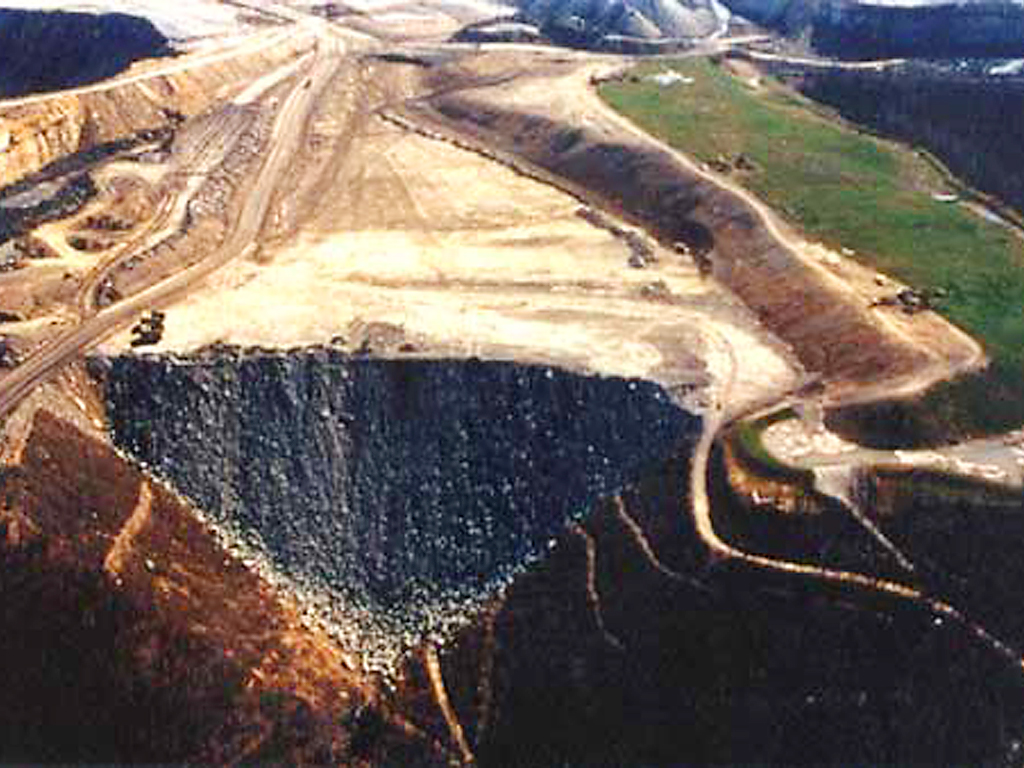The three methods of surface mining
1) Strip mining.

Strip mining is used when the coal is near the surface or when the overburden was unstable. As mining progresses, the overburden is placed in the previous mine cavity. The advantages of this method are that the cost of mining is lower, and it is safer than underground mining because miners aren't exposed to the toxic air and possible collapsing tunnels. The disadvantages could include the destruction of the natural ecosystem and pollutants being exposed to the atmosphere. After fragile ecosystems are disturbed, it can take many years to regain equilibrium, which could result in the loss of plant and animal life.
2) Contour Mining

Contour mining is a type of of strip or surface mining that follows the contour of a hill or mountain leaving terraces in the mountainside. Contour mining uses small earth-moving equipment such as power shovels, backhoes and bulldozers — similar to equipment used for most other kinds of construction. Contour mining is therefore a favorite technique of small operators in Appalachia, because it is easy to move in and out of the mining business as market conditions change. The bad thing about contour mining is that contour operators often have too much spoil after mining is finished. When overburden is removed it breaks up and loses some of the compaction that occurred over the thousands of years that it laid undisturbed. The volume of the material can increase up to 25%. The pits left after extracting the relatively thin coal seams of the East are often not large enough to hold this added volume. As a result, most contour miners must dispose of their excess spoil in another disposal area. This means that additional land beyond that required for mining has to be disturbed in order to fix the results of what the mining caused.
3) Mountaintop Removal










